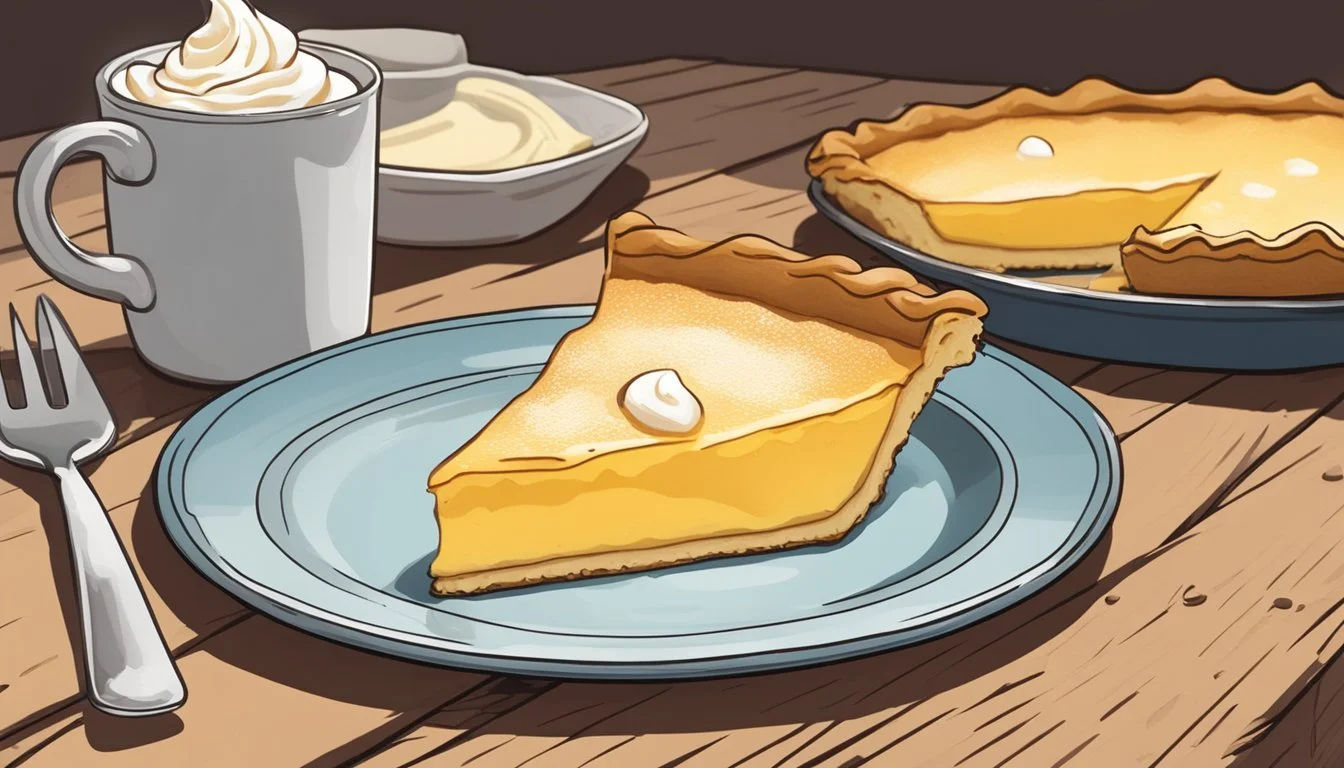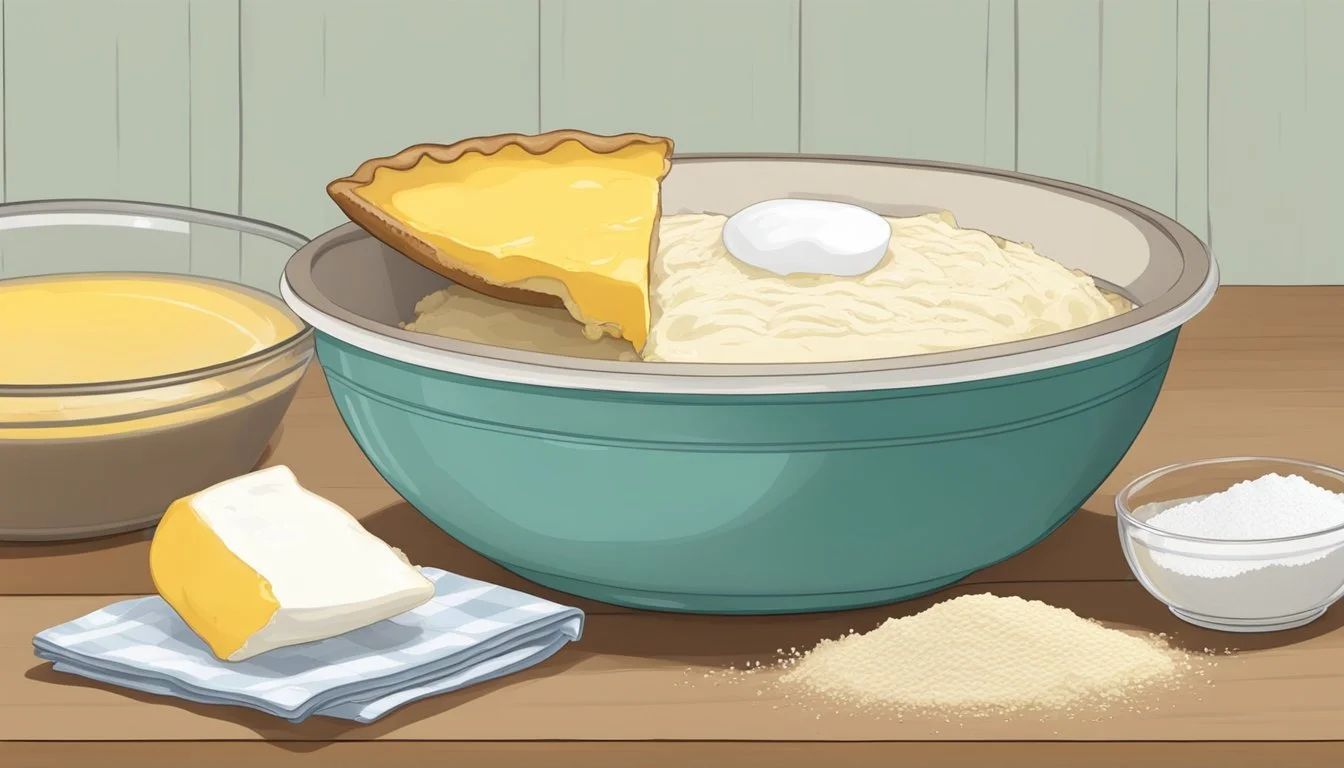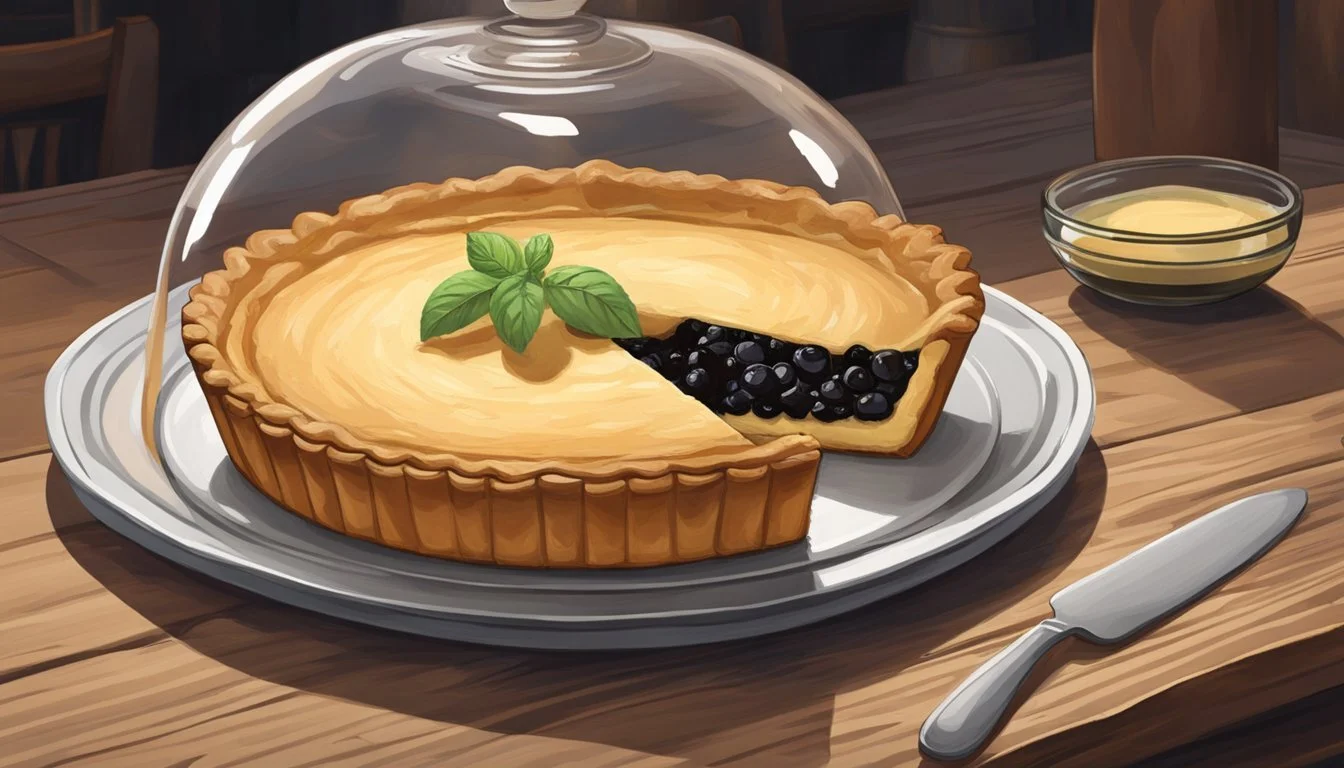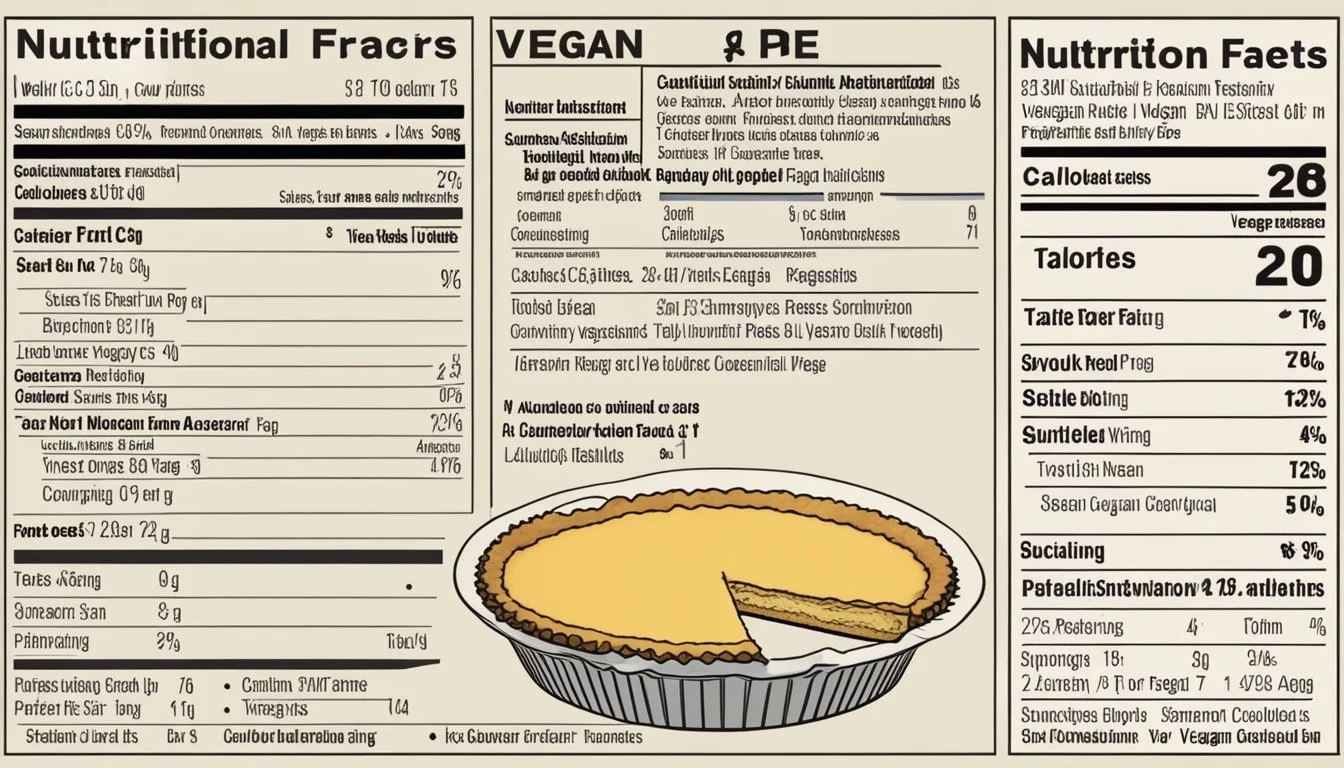Is Buttermilk Chess Pie Vegan?
Debunking Dessert Myths
When inquiring whether buttermilk chess pie can be considered vegan, one must examine the traditional ingredients that constitute this classic dessert. Buttermilk chess pie is a staple in Southern cuisine, known for its rich, custard-like filling that is both sweet and tangy. The pie typically includes eggs, butter, sugar, and of course, buttermilk—all of which are animal-derived products. These ingredients play a crucial role in giving the pie its characteristic flavor and texture, especially with the addition of lemon juice and zest that can sometimes be found in recipes for a brighter taste.
The crust of a buttermilk chess pie is ordinarily made from pastry dough consisting of flour, butter, and sometimes shortening, which presents additional challenges for vegan adaptations. However, the essence of the dessert lies in its creamy filling, which creates a contrast with the flaky crust—a contrast that is traditionally achieved with ingredients that are not vegan-friendly.
Given the predominant use of animal-based products in standard buttermilk chess pie recipes, the dessert in its classic form is not suitable for a vegan diet. Nonetheless, there is a growing interest in modifying beloved desserts (What wine goes well with desserts?) to fit plant-based lifestyles. This entails finding substitutes that mimic the properties and tastes of the original ingredients without compromising the integrity of the pie's beloved texture and flavor. Addressing this interest, chefs and home bakers alike are exploring ways to recreate buttermilk chess pie using plant-based alternatives, such as dairy-free butters, milk substitutes, and egg replacements.
Understanding Chess Pie
Chess pie is a classic dessert with a rich history and presence in Southern culture. It features a distinct balance of sweet and tangy flavors, typically encased in a flaky pastry crust.
Origins of Chess Pie
The roots of chess pie can be traced back to England where similar custard pies were made. It is thought to have evolved from the English "cheese pie," which, despite its name, contained no cheese but had a consistency similar to cheesecake. Chess pie made its way across the Atlantic, where it became a staple in the American South.
Defining Chess Pie
At its core, chess pie consists of a simple filling made from sugar, butter, eggs, and a small amount of cornmeal which gives it a subtle texture. The addition of ingredients like vinegar or lemon juice contributes to its characteristic tanginess. While a lemon chess pie includes lemon for flavor, chocolate and coconut can also be added, giving rise to chocolate chess pie and variations with coconut.
Variations of Chess Pie
Chess pie allows for creativity, with different versions becoming beloved over time. Lemon chess pie adds a refreshing zest to the classic recipe, while chocolate chess pie caters to those who love a rich cocoa flavor. Some variations also include coconut, adding a tropical twist to the traditional recipe.
Chess Pie in Southern Culture
Chess pie is more than a dessert; it is a part of Southern identity and hospitality. This southern dessert is often present at gatherings and celebrations, seen as a symbol of community and comfort.
Nutritional Considerations
While chess pie is undeniably delicious, it is also high in calories, saturated fat, and sugar. Typically, a single slice of chess pie contains:
Calories: Varies depending on ingredients and size, but generally high
Saturated Fat: Significant amounts due to butter and eggs
Trans Fat: Minimal if using natural ingredients
Cholesterol: Present from eggs and butter
Sodium: Generally low
Carbohydrates: High due to sugar content
Fiber: Low
Iron: Varies; present in some ingredients like egg yolks
Polyunsaturated Fat: Lower compared to saturated fat
As with many desserts, moderation is key, and chess pie should be enjoyed as an occasional treat within a balanced diet.
Is Buttermilk Chess Pie Vegan?
Buttermilk chess pie traditionally contains animal-derived ingredients, but it can be adapted to fit a vegan diet with careful ingredient substitutions.
Traditional Ingredients Analysis
A classic buttermilk chess pie is not vegan-friendly as it typically contains eggs, buttermilk, cream, and butter. These ingredients provide the custard filling with its characteristic creamy texture and tangy flavor. The eggs serve as a binder and supply protein, while dairy products contribute to the richness and sweetness of the pie.
Eggs: Binding agent, structure, custard texture
Buttermilk: Tangy flavor, creaminess
Butter: Richness, flavor
Cream: Increased creaminess and fat content
Vegan Substitutes
Vegan versions of buttermilk chess pie utilize plant-based alternatives to replicate the traditional pie's taste and texture:
Non-dairy milk mixed with an acidic agent (e.g., vinegar or lemon juice) can emulate buttermilk.
Vegan butter or coconut oil serves as a fat substitute.
Vegan egg replacers, such as chia seeds, flaxseed meal, or commercial products, can mimic the binding properties of eggs.
Common Challenges in Veganizing
The main challenge in creating a vegan buttermilk chess pie lies in maintaining the creaminess and the balance between sweetness and tanginess without dairy or eggs.
Ensuring the custard filling sets properly without eggs
Achieving the same rich flavor profile using only plant-based fats
Vegan Buttermilk Chess Pie Recipes
Vegan buttermilk chess pie recipes introduce novel ingredients to align with vegan dietary restrictions while attempting to closely match the qualities of the original pie. These recipes are often detailed and precise to ensure success in vegan baking.
Specific ratios of vegan substitutes are crucial.
Instructions often include the process of prebaking the crust, just like traditional recipes.
Taste and Texture Comparison
In vegan buttermilk chess pie, the texture aims to be as creamy and custard-like as the non-vegan version. The flavor profile should be a harmonious blend of sweet and tangy elements, although subtle differences may be present due to the nature of the ingredients used.
The use of coconut oil might impart a slight coconut flavor.
Acidic agents used to make vegan buttermilk can affect the tanginess degrees differently than traditional buttermilk.
Preparing Buttermilk Chess Pie
Buttermilk Chess Pie is a classic dessert, combining a flaky crust with a sweet custard center. This section provides a meticulous guide to crafting the perfect pie from crust to topping.
The Perfect Pie Crust
Ingredients:
1 1/2 cups all-purpose flour
1/4 tsp salt
1/2 cup unsalted butter, chilled
3-4 tbsp cold water
Instructions:
Blend the flour and salt in a large bowl.
Cut in the chilled butter until the mixture resembles coarse crumbs.
Gradually add cold water, stirring until the mixture forms a ball.
Roll out the dough on a floured surface and place it in a pie pan. Trim excess.
Alternatively, a store-bought crust can be used for convenience.
Making the Filling
Ingredients:
1 3/4 cups sugar
2 tbsp all-purpose flour
2 tbsp cornmeal
1/4 tsp salt
1/2 cup unsalted butter, melted
1/2 cup buttermilk
1 tsp vanilla extract
Zest from 1 fresh lemon
3 large eggs
Instructions:
Whisk sugar, flour, cornmeal, and salt in a large bowl.
Stir in the melted butter, buttermilk, vanilla, and fresh lemon zest.
Beat the eggs lightly and combine them with the mixture until just blended.
Baking Tips and Techniques
Instructions:
Preheat the oven to 350°F (175°C).
Pour filling into the pie crust and place on a baking sheet.
Bake for about 45 minutes or until the custard is set.
Avoid over-baking by checking doneness with a toothpick inserted in the center.
Note: Shield edges with aluminum foil or parchment paper if necessary to prevent over-browning.
Decoration and Topping Ideas
Decorations:
Whipped cream: Dollop or pipe on top for a creamy contrast.
Fresh lemon zest: Adds a zesty fragrance.
Nut: A sprinkle of nutmeg or crushed pecans for a festive touch.
Serving and Presentation
Instructions:
Allow the pie to cool to room temperature before serving.
Slice with a sharp knife, cleaning the blade between cuts.
Serve the pie with additional whipped cream if desired.
Presentation is enhanced when served on elegant dessert plates.
Storing and Preserving Chess Pie
Proper storage extends the life and preserves the quality of buttermilk chess pie, a sweet sugar pie variant. Maintaining the right temperature and storage conditions is central to serving a delicious chess pie with its optimal flavor and texture.
Best Practices for Freshness
To keep buttermilk chess pie fresh, it should be stored in the refrigerator within two hours of cooling to room temperature. It needs to be covered, ideally in an airtight container, to prevent it from absorbing other odors and drying out. When serving, the pie should be brought to room temperature to ensure the best flavor and texture.
Container: Airtight container or tightly wrapped in plastic wrap or aluminum foil.
Temperature: Store in the refrigerator between 35°F and 40°F.
Freezing and Thawing Tips
Freezing is an effective way to extend the shelf life of buttermilk chess pie. To freeze:
Cool the pie completely at room temperature.
Wrap it tightly in several layers of plastic wrap or aluminum foil.
Place the wrapped pie in a heavy-duty freezer bag or an airtight container.
To thaw:
Transfer the pie into the refrigerator and allow it to thaw overnight.
For quicker thawing, leave it on the counter for a few hours, but consume promptly once fully thawed.
Freezer Storage: Can be kept frozen for up to 3 months for best quality.
Thawing: Refrigerator thawing is recommended for food safety.
Shelf Life and Food Safety
The shelf life of buttermilk chess pie depends on the storage conditions:
In the refrigerator, the pie typically remains good for 3-4 days.
At room temperature, it should not be left out for more than 2 hours for food safety reasons.
Ensuring proper storage temperature is key to the prevention of foodborne illness. Discard pies that show any signs of spoilage, such as an off smell or visible mold growth.
Refrigerator Shelf Life: 3-4 days.
Risk at Room Temperature: Advised against due to risk of bacterial growth.
Nutritional Information and Dietary Adaptations
Buttermilk chess pie is a dessert with a specific nutritional profile and ingredients that are not suitable for vegan diets. This section provides an overview of its caloric content, compatibility with different diets, and ingredient analysis concerning allergies.
Caloric Content and Health Considerations
A typical serving size of buttermilk chess pie (about 125 grams) contains approximately 460 calories, with a significant portion derived from fat and sugars. Calories from fat often account for nearly half of the total caloric value. When assessing this dessert's health impact, saturated fat, cholesterol, and sugar content are important factors to consider. People conscious about their daily calorie intake or managing conditions such as hyperlipidemia should be mindful of these elements.
Adapting for Special Diets
For individuals following a vegan diet, a traditional buttermilk chess pie does not align with their dietary choices due to the presence of dairy (buttermilk) and eggs. Adapting the recipe to fit a vegan diet requires substitutes like plant-based milk mixed with an acid to replicate buttermilk and egg replacements such as flax or chia seeds. Those avoiding gluten would need to consider replacing the flour in the crust with a gluten-free alternative.
Analyzing Ingredients for Allergies
The primary ingredients found in a buttermilk chess pie, including butter, buttermilk, flour, and eggs, can pose allergen risks. Those with dairy allergies need to avoid buttermilk and butter, while individuals with allergies to eggs or nuts (sometimes an ingredient in pie crusts) must ensure these items are substituted or omitted. Always inspecting the food label or recipe for potential allergens is crucial, as is cross-contamination awareness when preparing or purchasing this dessert.
Related Desserts and Comparisons
This section delves into how buttermilk chess pie fits into the wider world of desserts, specifically other pies with which it shares similarities and differences.
Comparing Chess Pie with Other Custard Pies
Chess pie is a classic Southern dessert that shares characteristics with other custard pies. Traditionally, chess pie includes eggs, sugar, butter, and a small amount of flour or cornmeal. The addition of cornmeal differentiates chess pie from its custard pie relatives, and ingredients like lemon and chocolate can add a twist, creating variations like lemon chess pie and chocolate chess pie. Unlike chess pie, a classic custard pie often omits the cornmeal and includes nutmeg, giving it a distinctly different flavor profile.
Exploring 'Desperation Pies'
'Desperation pies' refers to a category of pies made with simple, readily available ingredients during times when fruit was scarce. Chess pie falls into this category as well as sugar pie, which is a minimalist pie that primarily uses sugar for its filling. Desperation pies speak to the resourcefulness of cooks who worked with what they had to create delicious desserts.
Pecan, Pumpkin, and Other Holiday Pies
Pecan pie and pumpkin pie are staples of the Thanksgiving dessert table. Pecan pie is rich with nuts and syrup, while pumpkin pie offers a smooth, spiced custard filling. Buttermilk chess pie, while less commonly associated with holidays like Thanksgiving, can also find its place among these seasonal favorites due to its simple charm.
Alternative Sweet Pies
While buttermilk chess pie is a type of custard pie, there are numerous other sweet pies that diverge from the custard base. For example, fruit pies, such as apple or cherry, rely on the natural sweetness and tartness of the fruit, often thickened with starch and encased in a flaky crust. These alternatives provide a broader spectrum of flavors and textures for pie enthusiasts.
International Variants of Custard Pies
In England and other countries, custard pies come in many forms, from the dense and creamy fillings of tartes to the light and delicate custards of flans. Each variant takes on unique characteristics dependent on cultural preferences and local ingredients, but all share a common thread with the classic custard pie base.
Conclusion
Buttermilk chess pie is traditionally not a vegan dessert. Its essential ingredients, like buttermilk and butter, are dairy-derived and therefore animal products. However, that does not preclude the possibility of creating a vegan-friendly version. Modifications are necessary for those adhering to a vegan diet to enjoy this classic dish.
For a vegan buttermilk chess pie, one would replace regular buttermilk with a plant-based milk, such as almond or soy milk mixed with an acid like vinegar or lemon juice, to mimic the tangy flavor. Vegan butter substitutes, often made from plant oils, can replace traditional butter. Sugar should be confirmed as vegan, as some sugar is processed using bone char.
Eggs, also integral to the structure of the pie, can be replaced with vegan egg replacers, such as flax or chia seed eggs, or commercial replacements available in the market. Vegan-friendly pie crusts—either homemade using solid vegetable fats, or purchased, ensuring no animal-based ingredients are present—are the final piece of the puzzle.
Confectionery perfection in a vegan format is achievable with these substitutions. The pie retains its characteristic sweetness and creamy texture but aligns with a vegan lifestyle. This adaptation delicately balances the original charm of buttermilk chess pie with modern dietary choices.
Appendix
The Appendix section provides a sample buttermilk chess pie recipe, a glossary of terms related to the dish, and references for additional resources that could enhance the reader's understanding and ability to recreate this dessert.
Sample Buttermilk Chess Pie Recipe
Ingredients:
1 pie crust (store-bought or homemade)
1 1/2 cups of sugar
1/2 cup of butter, melted
3 tablespoons all-purpose flour
3 eggs
1 cup buttermilk
1 teaspoon vanilla extract
A pinch of salt
Directions:
Preheat the oven to 350°F (175°C) and prepare the pie crust in a pie dish.
In a bowl, combine the melted butter and sugar until well mixed.
Beat in the eggs, one at a time, then add the buttermilk, vanilla extract, and a pinch of salt.
Sprinkle the flour over the mixture and mix thoroughly.
Pour the filling into the crust and bake for 45-55 minutes until the pie is set and the top is lightly golden.
Allow the pie to cool before serving. Optionally, top with whipped cream before serving.
Glossary of Terms
Buttermilk Pie: A custard pie with a primary filling composed of sugar, butter, eggs, and buttermilk.
Chess Pie: A southern dessert that is similar to buttermilk pie but includes cornmeal and vinegar in its filling and no buttermilk.
Custard: A dessert or a filling made with a mixture of milk or cream and egg, which is thickened by heat.
Bake: To cook food by dry heat without direct exposure to a flame, typically in an oven.
References and Additional Resources
Recipes:
"The Best Nearly Vegan Buttermilk Pie You've Ever Tasted" - Blogger
"Chess Pie" - My Life After Dairy
"Southern Buttermilk Pie | Jessica in the Kitchen"
"The VegNews Guide to Making Any Pie Vegan" - VegNews
Additional Reading:
Food Science literature on the role of acidity in buttermilk and its impact on baking.
Cookbooks specializing in custard-based desserts for a deeper exploration into the variety of similar recipes.









